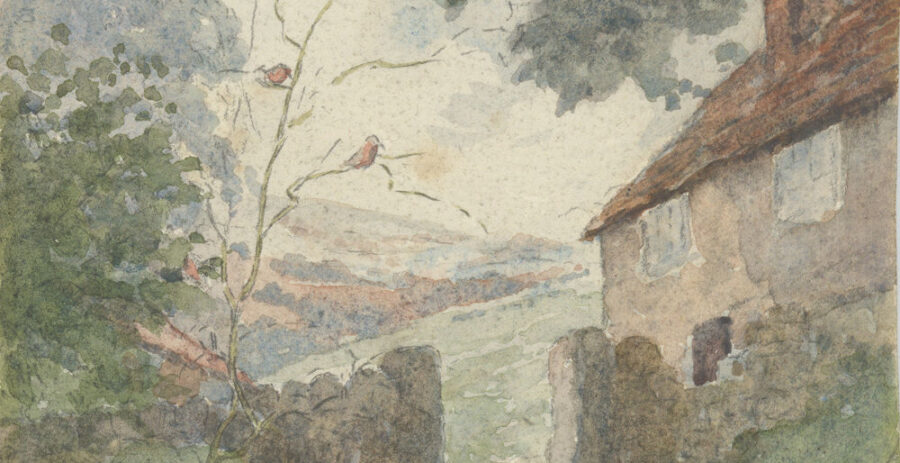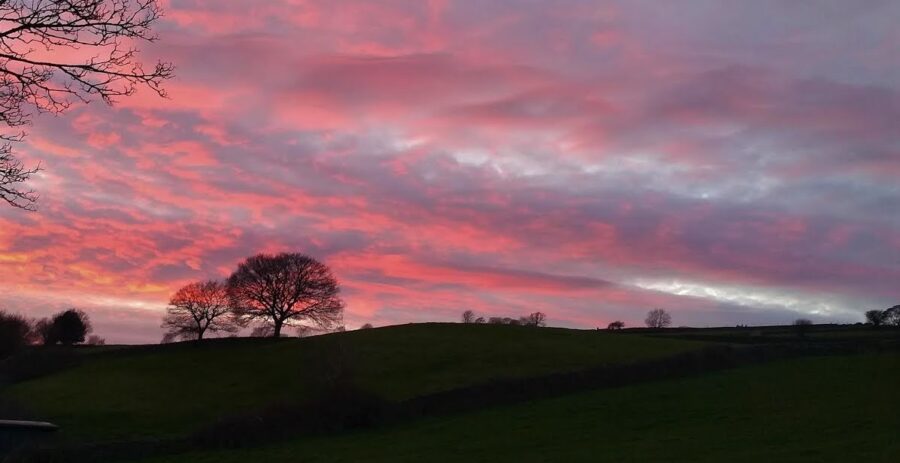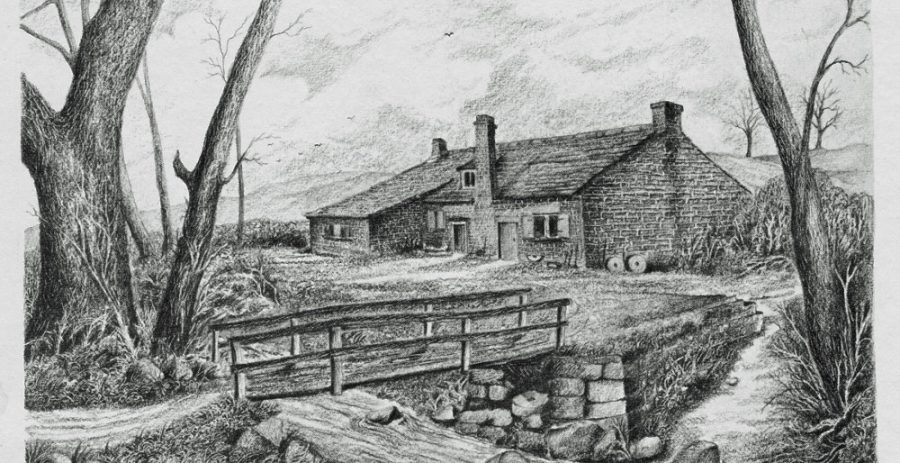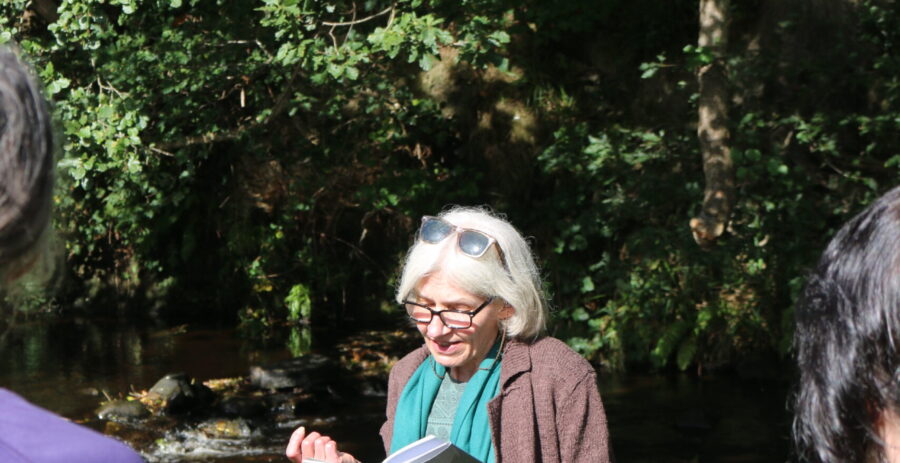From Victorian times, and probably long before, the Rivelin Valley has inspired various types of arts and cultural activities, including poetry, painting and sculpture.
The Rivelin Valley was one of the main reasons John Ruskin, the great Victorian philosopher and philanthropist, chose Sheffield as the location for his first local museum. He believed passionately that hard working people should have access to nature and the arts, and the contrast between the grim day-to-day conditions of Sheffield’s ‘Little Mesters’* and the fresh air and fine views from Bell Hagg drew him to Walkley in 1875. The museum he established there has since evolved into the Ruskin Collection in Sheffield’s Millennium Gallery, one of the star features of the city today. [Link to pdf about the Ruskin museum]
Earlier in the 19th century the Sheffield industrialist Ebenezer Elliott was being celebrated for his championing of the working classes in the face of the Corn Laws. He became known as ‘the People’s Poet’ and he too was inspired by Rivelin. The statue of Elliott in Western Park (Sheffield) has him seated “on his favourite rock in the Rivelin Valley”. Poets have continued to be inspired by Rivelin into the 20th and 21st century, some examples of which can be found here.

In 1920, when survivors returned from the trenches of The Great War, they must have been yearning for their ‘land fit for heroes’, and for some local men, Rivelin provided a way to deal with what we now call ‘Post Traumatic Stress Disorder’. They joined a group of amateur and professional artists gathered around an old and exceptionally talented landscape painter, Robert Scott Temple. Based at Rivelin Corn Mill, these Rivelin Valley Artists captured a unique record of Rivelin as its working watermills tumbled down to be taken over by wild nature. The combination of creative companionship and access to natural beauty must have helped enormously with their recovery. Details of some of these artists and their paintings, and works by others, can be seen here.
The Rivelin Valley is also home to sculptures that reflect the history and wildlife of the valley, including the popular Rivelin Chair, the carved stone bench celebrating 30 years of the RVCG, and four cast-iron mill-marker posts. Details of these sculptures and others can be found here [Link to sculpture page]
The Rivelin Valley is still working its magic and we hope it will inspire you too. Please do get in touch if you would like your work to be included on these web pages.
* The Little Mesters were a network of craftspeople working out of small workshops or from their own homes. They were self-employed and carried out the different stages of the production of goods, which were ordered and sold by Master Manufacturers. They mostly concentrated on individual aspects of forging, grinding or finishing and would also specialise in particular products, such as razors, penknives or surgical instruments. At the height of their population in the mid-1800s, Little Mesters were making a vast contribution to the variety of products which bore a Sheffield stamp. Their reputation is one of skilled work and quality products. Visit Kelham Island Industrial Museum (Sheffield) to find out more about the equipment and tools used by Little Mesters.




